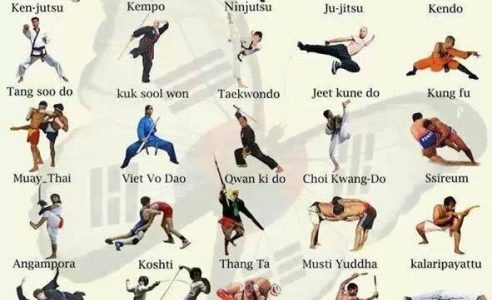Demystifying The Different Martial Arts Designs: From Karate To Taekwondo
Demystifying The Different Martial Arts Designs: From Karate To Taekwondo
Blog Article
Web Content Created By-Magnussen Russo
Are you tired of sensation bewildered by the huge world of martial arts? With a lot of designs to pick from, it can be simple to get shed in a sea of strikes, kicks, and mysterious names. But anxiety not!
This conversation will debunk the different martial arts styles, taking you on a trip from the powerful strikes of Martial arts to the vibrant kicks of Taekwondo. Prepare to uncover the beginnings, techniques, and approaches behind these ancient art forms.
So, tighten your belt and prepare to embark on an informing expedition right into the exciting world of martial arts.
Origins of Martial Arts Styles
The beginnings of fighting styles designs can be traced back to old civilizations and their requirement for self-defense and combat strategies. Throughout history, various societies established their very own unique methods of battling, each with its very own set of strategies and viewpoints.
In China, for example, martial arts styles such as Kung Fu and Tai Chi were developed as a means of protection and boosting physical and psychological wellness.
In Japan, the samurai warriors created designs like Karate and Judo, concentrating on technique, accuracy, and proficiency of the body.
Similarly, in Korea, Taekwondo became a martial art emphasizing high kicks, quick activities, and mental fortitude.
These very early human beings laid the structure for the diverse selection of martial arts styles that exist today, each with its very own rich background and cultural relevance.
Methods and Educating Techniques
To master martial arts designs, specialists must learn various strategies and training techniques.
Techniques are the details activities and activities used in combat, such as punches, kicks, throws, and blocks. Different fighting styles styles have their very own special collection of techniques that experts must master via rigorous training.
Training techniques differ depending upon the style, but they generally involve a combination of physical conditioning, drills, competing, and types.
Physical conditioning is important to develop strength, adaptability, and endurance. Drills help experts fine-tune their strategies and improve their rate and precision.
Competing allows professionals to exercise their methods in a regulated, reasonable setting. Forms, likewise known as kata, are ironclad sequences of motions that aid professionals create muscular tissue memory and focus.
Approaches and Principles
Checking out the ideologies and concepts of martial arts designs can provide you with a deeper understanding of your selected technique. Each fighting style has its own special philosophy and set of guiding principles that form the method it's exercised.
For instance, Martial arts emphasizes discipline, respect, and self-control. It instructs professionals to focus their body and minds, allowing them to defend themselves while maintaining a sense of internal peace.
On the other hand, Taekwondo places a solid focus on rate, agility, and adaptability. what is chi energy in martial arts are rooted in the tenets of courtesy, stability, perseverance, self-constraint, and indomitable spirit.
Read Home
Since you've explored the origins, techniques, and approaches of numerous fighting styles styles, you have a much deeper understanding of these old disciplines.
Think of a young karate trainee, experimenting undeviating determination and focus, appearing boards with a powerful strike.
Their trip showcases the commitment and toughness needed to master a fighting style, reminding us that with self-control and willpower, anything is possible.
